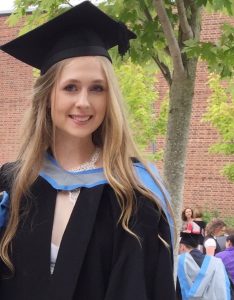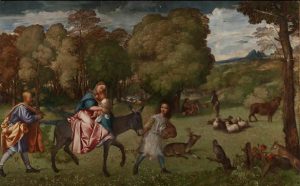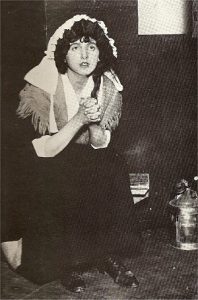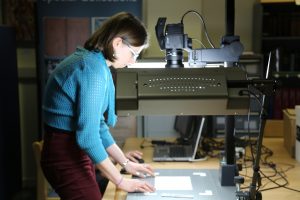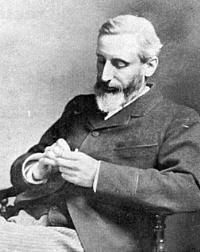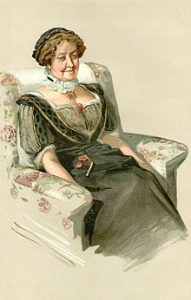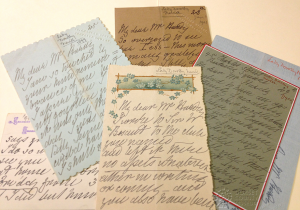Peter Faulkner recently visited the project to view letters from William Morris and his daughter May Morris. Here he shares his experience.

I taught English at the University of Exeter from 1971 until my retirement in 1998, and devoted a good deal of my time to the study of William Morris and his colleagues. Two years after I had retired I was asked to co-teach a course on the nineteenth century with a newly-arrived Lecturer, Angelique Richardson , a Hardy expert. Angelique has kindly kept in touch with me since then, and put me in touch with postgraduate students whose interests overlap with mine. One of these is Helen Angear, who is writing a PhD on Hardy’s letters, many of which are in the archive at the Dorset County Museum in Dorchester. Helen is also involved, through the Exeter Digital Humanities Team, in the digitisation of the over 5,000 letters in a project called ‘Hardy and Heritage’, a process which it is hoped will be completed by September 2018.
I was aware of one letter from Morris to Thomas Hardy, included in the third volume of the fine edition of The Collected Letters of William Morris, edited by Norman Kelvin and published by Princeton U.P. in 1996. Here is the letter as it appears in this edition, with five footnotes:
Kelmscott House
Upper Mall, Hammersmith
December 15 [1891]
Dear Sir Thank you very much I shall be very pleased to receive your book & to read it.2 I have read two of your books with much pleasure, Far from the Madding Crowd,3 & The return of the Native.4 The first one is the most pleasing and I suppose you would look upon it as the most typical of your works. But there is a great deal of close study of nature, (I mean human of that ilk) in the Return, besides the beauty of the mise en scéne5 which with you is a matter of course.
Again with many thanks I am Yours faithfully William Morris
Kelvin provides five notes. 1& 2 refer us to Michael Millgate’s Thomas Hardy, a biography (New York: Random House, 1982); on p.319, Millgate states that Hardy sent Morris a copy of Tess in November 1891, adding that the two men never met. Kelvin agrees that there is no evidence of a meeting, but suggests that the two men might have met at a meeting of the Society for the Protection of Ancient Buildings, which Morris founded in 1877 and which Hardy joined in 1881 or 1882. In 1882-3 Hardy ‘offered … to keep a watchful eye on Wimborne Minster’ and in 1889 he was concerned about Stratton Church (Millgate, pp. 235 & 302). 3. Gives the date of publication, 1874. 4. Gives the date of publication, 1878. In neither of these notes does Kelvin respond to Morris’s critical remarks; nor does he comment on the rather odd bracketed expression ‘I mean human save of that ilk’ 5. Kelvin draws attention, in a slightly embarrassed fashion, to Morris’s inaccurate use of French accents.
Knowing the letter in this form, it was a great pleasure to be invited by Helen Angear to read the original handwritten version, which I did on Wednesday 22nd February of this year in the Special Collection at Exeter University Library, to which Helen had brought the letter with some other material of interest to me. A considerable surprise was the small size of the piece of notepaper on which Morris wrote – the seven lines of Kelvin’s main paragraph take up no fewer than fifteen short lines, while the address is printed in small capitals, with the date written in beneath. As a reader, I became aware of the extent of regularisation in the Collected Letters – which is no doubt typical of all such editions. Reading the original, I felt more than usually involved, while the letter seemed more vulnerable and its survival more remarkable. There is a special pleasure in this proximity to a text.
I was also shown two letters to Hardy from Morris’s younger daughter, May. In the first, she addresses Hardy as ‘Dear Sir’ and asks a favour. At the time, May was engaged in editing her father’s Collected Works and writing Introductions to each the 24 volumes, published between 1910 and 1915. In that for Vol. XVIII, she wanted to give an account of the buildings in Oxfordshire and Gloucestershire that particularly interested her father, and she recalled reading in Tess of the D’Urbervilles – ‘that delightful and tragic book’ – Hardy’s memorable account of the ‘noble tithe-barn at Little Coxwell, near Faringdon’. Her request was that Hardy should allow her to quote the passage in her Introduction. Morris’s admiration for the barn is well known, though the barn is usually located at the nearby Great Coxwell. It would seem that Hardy gave permission for the account to be included, as two pages of Hardy are quoted in the Introduction, together with a photograph of the barn taken by F.H. Evans; ironically, though, the fine descriptive passage is not from Tess but from Far from the Madding Crowd, the novel referred to favourably by Morris in his letter discussed above. May remarks, appreciatively, that ‘I know no writer who has understood and interpreted so keenly well the past and present spirit of these simple and majestic buildings.’ The great Shearing-barn is not given a location in the novel, but one can readily understand why May associated it with Coxwell.
The second letter from May is from Kelmscott Manor, where she was now living, on 27 November 1926, and addresses ‘Dear Mr. Hardy’: ‘I am getting out an appeal for subscriptions for the building of a Village Hall in memory of my Father, and in doing so am anxious to get the support of those who care for the things he cared for.’ A note dated 5 December thanks Hardy for allowing his name to be added to her committee: ‘I am indeed glad to have it.’ Funds were slow to come in, and it was not until 1934 that the Hall, designed by Ernest Gimson (who had died in 1919) was opened, with Bernard Shaw in flamboyant form and the Prime minister, Ramsay MacDonald, who as a young man had known Morris, in the audience.
Having had such a good experience at the archive, I would encourage anyone whose research interests coincide in any way with Hardy to keep an eye on this project as it develops.
Some of Peter’s publications can be found here:
http://www.exeterpress.co.uk/en/Contributor/3448/Peter-Faulkner.html

